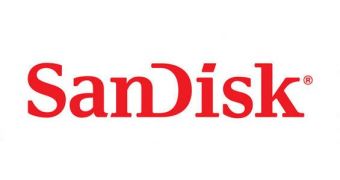There is a new memory chip in the house, one that claims to be the world's smallest in its category, with a die size of 170 square millimeters.
The new chip, created jointly by SanDisk and Toshiba, is a TLC (three-bit-per-cell) NAND semiconductor device.
It is the sort of chip used in the making of USB flash drives and memory cards.
SanDisk used the 19nm manufacturing process technology to build it and did its best to pack more information into each memory cell.
That is to say, SanDisk implemented the three-bit per cell (X3) technology, which lets it build NAND flash memory products with the ability to read and write three bits of information in each memory cell.
Not only that, but the write performance is supposedly “industry-leading”, at 18 MB/s, owed to the patented all bit line (ABL) architecture.
"Building a 128Gb NAND flash memory chip with this level of complexity is an incredible achievement," said Mehrdad Mofidi, vice president, Memory Design.
"This innovation allows SanDisk to continue to be a leader in helping our customers deliver smaller, more powerful products capable of doing more at lower cost."
Teams from SanDisk and Toshiba worked together on the making of the 128 Gb NAND flash memory chip at SanDisk's Milpitas campus.
Products based on it have been shipping since last year, and mass production is already ramping up, so it should take little for them to start selling.
Finally, the partners have invented a derivative product as well, a 64 Gb X3 NAND Flash memory chip for microSD cards.
Unfortunately, the more advanced chip manufacturing technologies become, the more the reliability of solid state storage decreases.
As such, there is not a whole lot of room for further reducing chip sizes and data density, an issue that Microsoft explored quite deeply, until it found that SSDs, as they are today, are mostly doomed.

 14 DAY TRIAL //
14 DAY TRIAL //